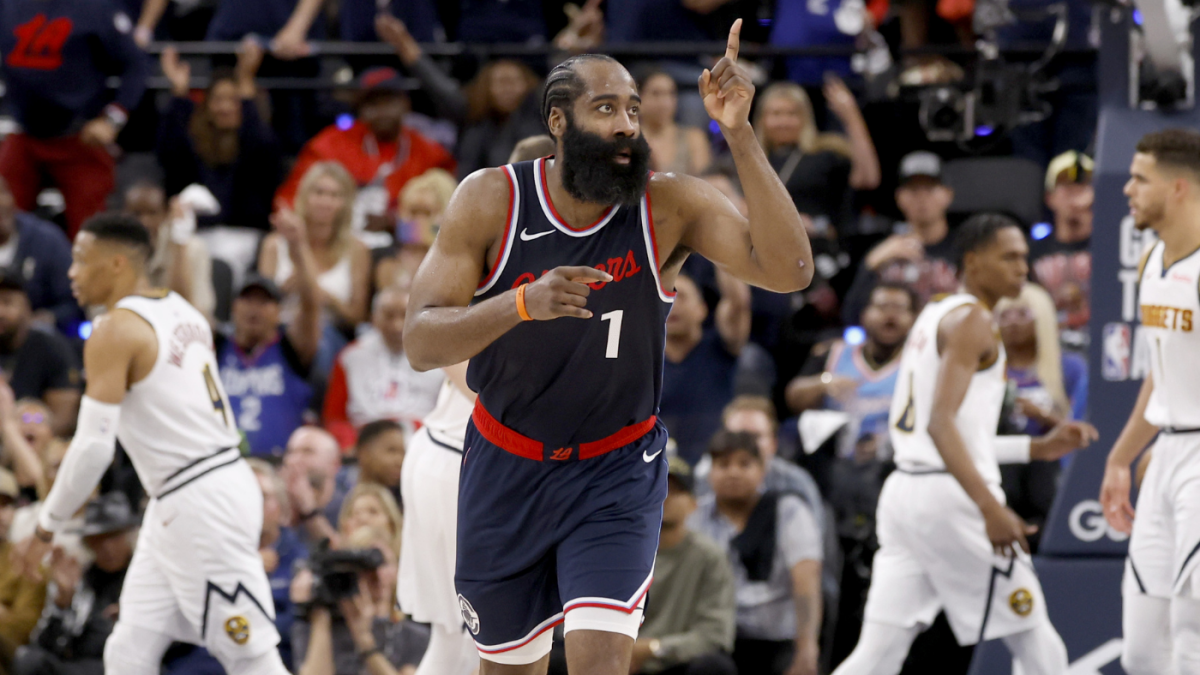James Harden’s recent decision to decline his player option and sign a new two-year, $81.5 million contract with the Los Angeles Clippers marks a pivotal moment in both his career and the franchise’s future. This move comes at a time when the NBA landscape is evolving, with teams and players navigating complex financial and competitive dynamics. Harden’s decision underscores his value as a veteran leader and elite scorer, while also reflecting the Clippers’ strategic vision for the future.
Context: Harden’s Journey and Clippers’ Ambitions
James Harden, an 11-time NBA All-Star and former MVP, joined the Clippers in 2022 with the goal of helping the team build a championship-caliber roster. The 2024-25 season was a testament to his resilience and impact, as he returned to All-Star form despite the challenges posed by injuries to key teammates like Paul George and Kawhi Leonard. Harden’s performance was instrumental in keeping the Clippers competitive, showcasing his ability to shoulder the offensive load and elevate younger players around him.
Harden’s contract situation was a critical point of discussion leading up to this decision. His player option for the 2025-26 season was valued at $36.3 million, but declining it allowed him to negotiate a new deal that better aligns with his aspirations and the Clippers’ long-term plans. The new contract not only provides Harden with a significant raise but also offers the Clippers financial flexibility as they navigate a roster in transition.
Contract Details and Terms
The new agreement is a two-year contract worth $81.5 million, covering the 2025-26 and 2026-27 NBA seasons. This deal represents a substantial upgrade from his previous two-year, $70 million extension. Key details of the contract include:
– Annual Average Salary: Approximately $40.75 million per year, reflecting Harden’s continued value as a high-impact player.
– Player Option: The second year of the deal includes a player option, allowing Harden to reassess his situation after the first season. This clause provides both Harden and the Clippers with flexibility based on performance, health, and market conditions.
– Partial Guarantees: The contract includes partial guarantees, which offer financial security while allowing adjustments based on future circumstances.
This contract structure is a testament to Harden’s ability to maintain his elite status despite entering his mid-30s. It also highlights the Clippers’ commitment to retaining a key player as they rebuild their roster around him.
Implications for the Clippers
The Clippers’ decision to retain Harden on this lucrative contract signals their commitment to building a championship-contending team. With Paul George now with the 76ers and Kawhi Leonard’s future uncertain due to injuries, Harden’s role as the team’s primary star has become even more crucial. The implications of this deal for the Clippers are multifaceted:
– Scoring and Playmaking Anchor: Harden remains the backbone of the Clippers’ offense, capable of creating his own shot and distributing to teammates effectively.
– Leadership Role: As a veteran leader, Harden provides invaluable guidance to younger players, helping them develop and adapt to the NBA’s challenges.
– Cap Flexibility: While the contract is substantial, the partial guarantees and player option give the Clippers some financial flexibility for future roster moves.
– Trade Considerations: The contract includes a 15% trade kicker, which could complicate potential trades but also reflects Harden’s value to the team.
Harden’s Motivation and Career Trajectory
At nearly 36 years old, Harden’s decision to sign this contract underscores his confidence in continuing to perform at a high level. His All-NBA return this season suggests that he still views himself as a top-tier player capable of competing for titles. Key factors in his decision include:
– Financial Security: The contract ensures substantial earnings while maintaining personal flexibility.
– Competitive Aspirations: Harden’s desire to compete for championships in a major market like Los Angeles is a significant motivator.
– Legacy: As an 11-time All-Star, Harden is focused on extending his legacy and contributing to the Clippers’ success.
Broader NBA Context
Harden’s contract and decision have broader implications for the NBA as a whole. In an era where supermax deals, player movement, and salary cap management define team composition, Harden’s move highlights how veteran stars navigate the complexities of the modern NBA. Key takeaways include:
– Star Retention: The Clippers’ ability to retain Harden emphasizes the importance of keeping star players over making costly trades.
– Salary Cap Management: The partial guarantee and player option in Harden’s deal illustrate smart financial engineering to allow future roster adjustments.
– Market Dynamics: With few guaranteed max offers available, Harden leveraged his value effectively to secure a lucrative deal.
Conclusion: Impact and Outlook
James Harden’s two-year, $81.5 million deal with the Clippers solidifies his place as a key figure in the NBA’s competitive and financial landscape. This contract balances personal security, competitive potential, and team flexibility, ensuring that Harden remains a central figure in the Clippers’ plans. For the franchise, this deal signals a commitment to building around Harden as they navigate roster changes and challenges.
Looking ahead, Harden’s ability to maintain his high-level performance and health will be crucial for both his legacy and the Clippers’ success. The player option in the second year of the contract provides strategic flexibility, allowing Harden to reassess his situation based on future circumstances.
The Clippers are at a pivotal stage, where their roster decisions, including how they complement Harden, will dictate their championship window. Harden’s new deal not only secures his future but also shapes the team’s trajectory as they navigate the evolving NBA landscape. This saga encapsulates the complexities of modern NBA contracts, the balancing act of star power, and the relentless pursuit of success that drives player and franchise decisions alike.

